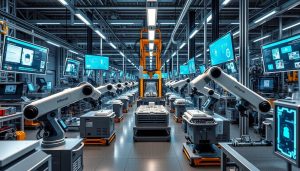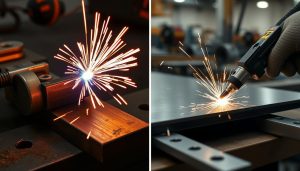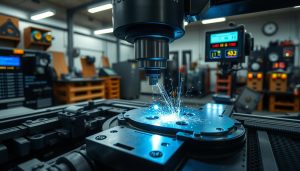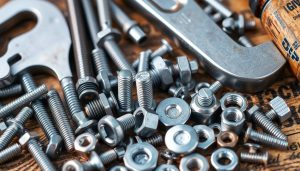As laser cutting technology continues to revolutionize the manufacturing and design industries, it’s crucial to understand the materials that can and cannot be effectively cut using this advanced process. Laser cutting offers a precise and efficient way to shape a variety of materials, but not all materials are compatible with this technique. In this article, we’ll explore the various laser cutting materials and the factors that determine their suitability for this innovative cutting method.
Materials That Can Be Cut with a Laser Cutter
When it comes to laser-cutting materials, there is a wide range of options available, each with its own unique properties and advantages. From the versatile wood and acrylic to the sleek leather, these materials offer a canvas for creating intricate and visually stunning designs.
Common Laser-Cutting Materials: Wood, Acrylic, and Leather
Wood, acrylic, and leather are among the most popular choices for laser cutting. These materials not only lend themselves well to the precision of laser technology but also provide a diverse array of textures and finishes that can elevate any project.
Advantages of Cutting Metals: Stainless Steel and Aluminum
While wood, acrylic, and leather are versatile options, the laser-cutting of metals, such as stainless steel and aluminum, offers unique advantages. These materials are known for their durability, strength, and sleek aesthetics, making them ideal for a wide range of applications, from architectural elements to high-end product designs.
Best Materials for Detailed Designs: Plastics and Paper
Plastics and paper are particularly well-suited for laser cutting when it comes to creating intricate and detailed designs. Their fine-tuned responsiveness to the laser beam allows for the precise execution of complex patterns and intricate shapes, opening up a world of possibilities for designers and artists alike.
| Material | Advantages |
|---|---|
| Wood | Versatile, natural texture, and eco-friendly |
| Acrylic | Transparent, durable, and easy to work with |
| Leather | Luxurious, flexible, and suitable for various applications |
| Stainless Steel | Robust, corrosion-resistant, and visually appealing |
| Aluminum | Lightweight, malleable, and perfect for intricate designs |
| Plastics | Versatile, customizable, and ideal for detailed projects |
| Paper | Affordable, eco-friendly, and great for intricate designs |
By understanding the unique properties and advantages of these laser-cutting materials, you can unlock a world of creative possibilities and bring your design visions to life with unparalleled precision and quality.
Materials You Should Never Cut with a Laser Cutter
As versatile as laser cutters are, there are certain materials that should never be processed using this technology. These include unsafe materials that can release toxic fumes or pose other serious hazards. Understanding the limitations and risks associated with laser cutting is crucial for maintaining a safe and efficient workflow.
Toxic Fumes and Hazards: PVC and Polycarbonate
PVC (polyvinyl chloride) and polycarbonate are two common plastics that should be avoided when working with a laser cutter. These materials can release toxic fumes when subjected to the intense heat of the laser, potentially causing respiratory issues and other health problems. Exposure to these fumes can be particularly dangerous, making PVC and polycarbonate unsuitable for laser cutting applications.
High Reflectivity Metals: Why Copper and Aluminum Are a No-Go
Highly reflective metals, such as copper and aluminum, pose a unique challenge for laser cutters. The high reflectivity of these materials can cause the laser beam to scatter, leading to unpredictable and potentially dangerous cutting patterns. This can not only compromise the quality of the final product but also put the operator at risk of injury. As a result, copper and aluminum should be avoided when using a laser cutter.
Dangerous Materials: Fabrics, Synthetic Fibers, and Food
In addition to plastics and metals, there are other dangerous materials that should not be processed with a laser cutter. These include fabrics, synthetic fibers, and food items. The intense heat of the laser can easily ignite these materials, posing a significant fire hazard and risking the safety of both the operator and the surrounding environment.
Understanding the limitations and risks associated with laser cutting is essential for maintaining a safe and efficient workflow. By avoiding these unsafe materials, you can protect yourself and your equipment while ensuring the best possible outcomes for your projects.
Why Some Materials Are Incompatible with Laser Cutters
When it comes to laser cutting, not all materials are created equal. Understanding the impact of chemical composition, material thickness, and potential safety risks is crucial for ensuring efficient and safe laser cutting operations. Let’s dive into why certain materials just don’t play well with laser cutters.
The Impact of Chemical Composition on Laser Cutting
The chemical makeup of a material can greatly influence its suitability for laser cutting. Certain substances, like polyvinyl chloride (PVC) and polycarbonate, can release toxic fumes when exposed to the intense heat of a laser. These hazardous emissions not only jeopardize the operator’s safety but can also damage the laser cutter itself.
How Material Thickness Affects Cutting Efficiency
The thickness of the material being cut is another key factor in determining laser cutting success. Thicker materials require more power and multiple passes to achieve a clean, complete cut. Pushing the limits of a laser cutter’s capabilities can lead to inconsistent cut quality, increased processing time, and potential damage to the machine.
Laser Cutter Safety and Machine Damage Risks
When using highly reflective metals like copper and aluminum, the laser beam can be reflected back into the machine, potentially causing permanent damage. Additionally, materials like fabrics, synthetic fibers, and food can pose serious fire hazards, putting both the operator and the equipment at risk.
By understanding the limitations and risks associated with certain materials, laser cutting enthusiasts can ensure a safe, efficient, and damage-free experience. Careful material selection is the key to unlocking the full potential of this versatile cutting technology.

Tips for Safe Laser Cutting
Maintaining a safe and efficient laser cutting workflow is crucial for both your personal well-being and the longevity of your equipment. From regular maintenance to proper ventilation, let’s explore the key considerations for ensuring a safe laser cutting environment.
Regular Maintenance and Cleaning of Your Laser Cutter
Consistent maintenance and cleaning of your laser cutter are essential for optimal performance and safety. Regularly inspect the machine for any wear and tear, and clean the components as per the manufacturer’s instructions. This helps prevent potential issues, such as mechanical failures or optical misalignments, that could compromise the quality of your cuts or pose fire hazards.
How to Avoid Fire Hazards When Cutting Certain Materials
Some materials, such as plastics and fabrics, are more prone to fire hazards when subjected to the intense heat of a laser cutter. To mitigate these risks, always use the appropriate power settings and maintain a close eye on the cutting process. Ensure that the work area is clear of any flammable materials, and have a fire extinguisher nearby in case of emergencies.
Proper Ventilation and Fume Extraction
Laser cutting can release harmful fumes and particulates, depending on the material being processed. Adequate ventilation and fume extraction systems are crucial to maintaining a safe working environment and protecting your respiratory health. Consider investing in a high-quality fume extractor or operating your laser cutter in a well-ventilated area to ensure a clean and breathable workspace.

By following these tips and best practices, you can ensure a safe laser cutting experience and extend the lifespan of your valuable equipment. Remember, safety should always be the top priority when working with any powerful machinery.
Shixinproto’s Laser Cutting Services
At Shixinproto, we pride ourselves on our expertise in providing professional laser cutting services. With a deep understanding of a wide range of materials, our team of skilled technicians is equipped to handle all your laser cutting needs. Whether you require precision cuts in wood, acrylic, leather, or specialized plastics, Shixinproto has the experience and state-of-the-art equipment to deliver exceptional results.
Safety is of the utmost importance to us, and we strictly adhere to industry-leading safety protocols to ensure the well-being of our team and your projects. Our commitment to quality is evident in every step of the laser cutting process, from meticulous material selection to the final, flawless product. With Shixinproto, you can trust that your laser cutting project will be handled with the highest standards of craftsmanship and attention to detail.
Shixinproto’s laser cutting services are designed to cater to the diverse needs of our clients, whether you’re a small business, a creative professional, or a large-scale manufacturer. Our team is dedicated to working closely with you to understand your unique requirements and deliver customized solutions that exceed your expectations. Experience the difference that Shixinproto’s professional laser cutting services can make for your project.





